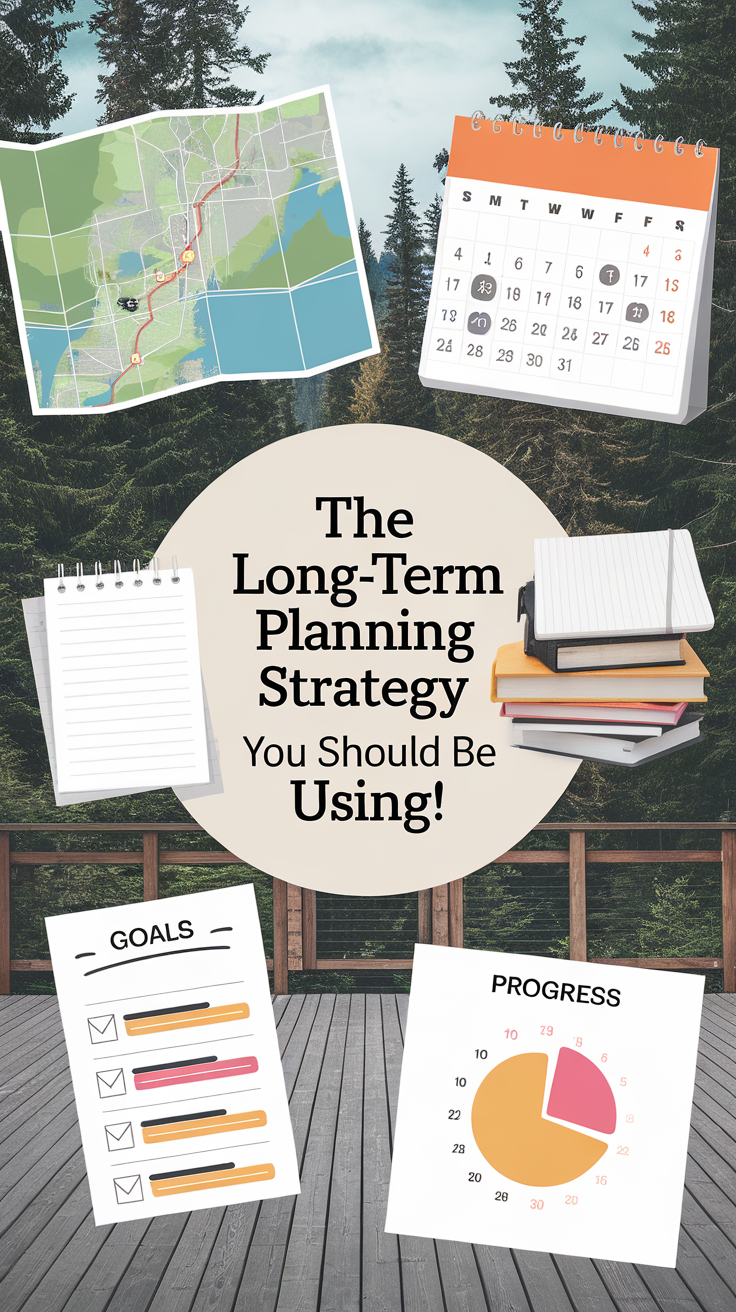The Long-Term Planning Tips That Are Surprisingly Simple
Long-term planning doesn’t have to be overwhelming; it can be surprisingly simple. Start by embracing clarity through simplicity. Set clear and achievable goals that guide your path. Prioritize tasks to focus on what truly matters most, and create a flexible timeline to adapt to changes. Regularly review your progress to celebrate small wins and adjust your strategies. Additionally, build a support network that encourages you along the way. By following these straightforward tips, you’ll find planning becomes easier and more effective. Curious about how to implement these strategies effectively? You’ll discover more helpful insights soon.
Key Takeaways
- Embrace simplicity by focusing on essential goals to enhance clarity and reduce overwhelm in long-term planning.
- Set clear, specific goals with measurable criteria to create a focused roadmap for success.
- Prioritize tasks based on urgency and importance to streamline efforts toward achieving your goals.
- Create a flexible timeline with milestones and buffer time to adapt to unexpected changes effectively.
- Regularly review progress to celebrate achievements, identify improvements, and adjust strategies for continued effectiveness.
Embrace the Power of Simplicity
Embracing the power of simplicity can transform your long-term planning. By stripping away unnecessary complexities, you’ll find clarity in your vision.
Focus on what truly matters, and prioritize your essential goals. Instead of overwhelming yourself with a myriad of tasks, break your plans down into manageable steps. This approach not only makes the process less intimidating but also allows you to maintain motivation.
You’ll notice that simplicity fosters creativity, enabling you to think outside the box. When you simplify, you can easily adapt to changes and challenges that arise.
Set Clear and Achievable Goals
When you set clear and achievable goals, you create a roadmap that guides your long-term planning.
These goals help you stay focused and motivated, making it easier to navigate the challenges ahead.
To guarantee your goals are effective, consider these three key strategies:
-
Be Specific: Define exactly what you want to achieve. Vague goals lead to confusion and lack of direction.
-
Make Them Measurable: Establish criteria to track your progress. This allows you to celebrate milestones and adjust your plans as needed.
-
Set Realistic Timelines****: Give yourself a reasonable timeframe to accomplish your goals. This keeps you accountable and prevents burnout.
Prioritize Tasks Effectively
To navigate the complexities of long-term planning, prioritizing tasks effectively is essential. You need to identify which tasks will have the greatest impact on your goals. Start by categorizing your tasks based on urgency and importance. This helps you focus on what truly matters.
| Urgent Tasks | Non-Urgent Tasks |
|---|---|
| Deadline-driven projects | Long-term research |
| Immediate feedback | Skill development |
| Critical meetings | Networking opportunities |
Create a Flexible Timeline
A flexible timeline is essential for successful long-term planning since it allows you to adapt to unexpected changes and challenges. By incorporating flexibility, you can manage setbacks and seize new opportunities without losing sight of your goals.
Here are three tips to help you create a flexible timeline:
-
Set Milestones: Break your larger goals into smaller, achievable milestones. This makes it easier to adjust your plan as needed.
-
Buffer Time: Include extra time between tasks. This way, you can accommodate delays without derailing your entire schedule.
-
Regular Check-ins: Schedule periodic assessments of your progress. This helps you identify areas needing adjustment and keeps your plan relevant.
With these strategies, your timeline will remain dynamic, making it easier to navigate the unexpected.
Regularly Review Progress
Regularly reviewing your progress is essential for staying on track with your long-term goals. Set aside time each week or month to evaluate what you’ve accomplished and where you stand.
This reflection helps you identify successes and areas needing improvement. Don’t hesitate to adjust your strategies if you discover something isn’t working. Celebrate your achievements, no matter how small, to keep your motivation high.
Documenting your progress can provide valuable insights into your journey, allowing you to see patterns and make informed decisions. By consistently checking in on your goals, you’ll stay focused and guarantee you’re moving forward.
This practice keeps you accountable and reinforces your commitment to achieving your long-term aspirations.
Build a Support Network
While pursuing long-term goals, building a support network can make a significant difference in your journey. Surrounding yourself with the right people provides motivation, accountability, and valuable insights.
Here are three steps to help you create an effective support network:
-
Identify Key Individuals****: Look for mentors, peers, and friends who inspire and challenge you. These people should have similar goals or experiences.
-
Engage Regularly: Schedule consistent check-ins with your network. Whether it’s weekly coffee chats or monthly group meetings, regular communication keeps everyone aligned.
-
Offer Support in Return: Building a network is a two-way street. Be there for others, share resources, and celebrate their successes.
Celebrate Small Wins
Celebrating small wins can greatly boost your motivation and keep you focused on your long-term goals. When you recognize and reward your progress, you create a positive feedback loop that encourages you to keep pushing forward. Break your larger goals into manageable milestones, and take moments to celebrate each achievement, no matter how minor.
Here’s a simple way to track your wins:
| Milestone Achieved | Celebration |
|---|---|
| Completed a project | Treat yourself to coffee |
| Reached a fitness goal | Buy new workout gear |
| Learned a new skill | Enjoy a night out |
| Saved a set amount | Plan a weekend trip |
These small celebrations help maintain your momentum and keep you excited about the journey!
Frequently Asked Questions
How Do I Stay Motivated During Long-Term Planning?
To stay motivated during long-term planning, break your goals into smaller tasks, celebrate your progress, and visualize your success. Stay organized, remind yourself of your purpose, and surround yourself with supportive people who inspire you.
What Tools Can I Use for Effective Planning?
You can use tools like Trello for organizing tasks, Google Calendar for scheduling, and Notion for extensive notes. These platforms help you visualize goals, set deadlines, and track progress, making your planning more effective and manageable.
How Do I Handle Setbacks in My Plan?
When setbacks occur, don’t panic. Reassess your goals, identify what went wrong, and adjust your plan accordingly. Keep a positive mindset, focus on solutions, and remember, flexibility is key to overcoming challenges successfully.
Can I Adjust My Goals After Starting?
Absolutely, you can adjust your goals after starting. Life changes, and so should your plans. Reflect on your progress, reassess your priorities, and make necessary tweaks to keep yourself aligned with your evolving aspirations.
How Often Should I Update My Support Network?
You should update your support network regularly, especially when your goals or circumstances change. Checking in every few months helps guarantee you have the right people around you to support your journey effectively.



